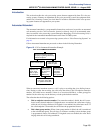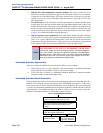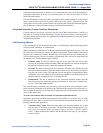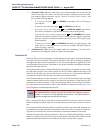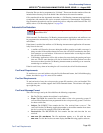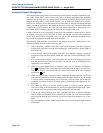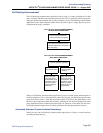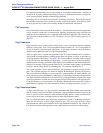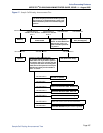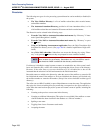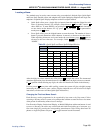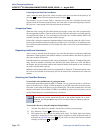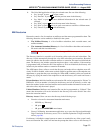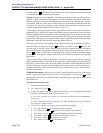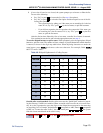
Voice Processing Features
INTER-TEL
®
CS-5200/5400 ADMINISTRATOR GUIDE, ISSUE 1.1 – August 2005
Page 266 Call Screening
Call routing announcements are recorded using the Voice Mail Administrator’s mailbox as
described on “Creating Audiotex Recordings” on page 65. Each announcement is assigned to
use a “custom greeting” number in Database Programming.
Recordings for fax documents should include all dialing instructions. The recording should
state whether documents can be selected by number and/or list all options. If fax delivery times
are set to specific days or times, the recording should also include this information.
Call Screening
Calls transferred from the Automated Attendant or a Call Routing Announcement application
can be screened, announced, or unannounced. Separate programming flags determine the
methods used for transferring calls to endpoints with mailboxes, endpoints with extension IDs,
and extensions without mailboxes or IDs. For details, refer to “Call Screening Options” on
page 261.
Digit Translation
Digit translation allows callers to dial a single digit to access a designated extension number,
mailbox, or hunt group. Up to 12 digit translation storage locations (#, *, 0–9) are available for
each Call Routing Announcement application. To use digit translation, the Call Routing
Announcement application must have special programming.
After the application is created and programmed, the Voice Mail Administrator’s mailbox is
used to make a custom audiotex recording that explains the options to callers, as described on
“Creating Audiotex Recordings” on page 65. The custom audiotex recording is then assigned
to the Call Routing Announcement application. A caller who listens to the Call Routing
Announcement recording can dial the single-digit location number to reach the designated des-
tination. For example, if the hunt group extension for a customer support group is programmed
for digit 3, the recording should say something like, “For customer support, press 3.”
The system provides a choice between Primary and Secondary Language prompts and dis-
plays. The available languages are American English, British English, Spanish, and Japanese.
The system selects the language to use for each call, as determined by the trunk, endpoint, and
voice processing system programming. When using a Call Routing Announcement application
with digit translation, the individual voice processing system applications assigned to the digits
can be programmed to override the device language and provide prompts in one language only.
Using this method, you can program a Call Routing Announcement tree that offers callers a
choice between languages. For more information, refer to “Language Selection” on page 172.
Digit Translation Nodes
A “digit translation node” is a digit translation destination that allows further digit translation
options. Unlike extension and mailbox destinations, a digit translation node does not move the
call to a specific location. Instead, it offers additional dialing options. A digit translation node
can use any of the Actions, including transfers to other digit translation nodes.
The use of digit translation nodes allows the programmer to create a Call Routing Announce-
ment with several layers to form a digit translation “tree.” The tree can be made up of digits
with destinations and/or digit translation nodes with additional translations. An example of a
Call Routing Announcement application with a multi-layered tree is shown on the next page.




